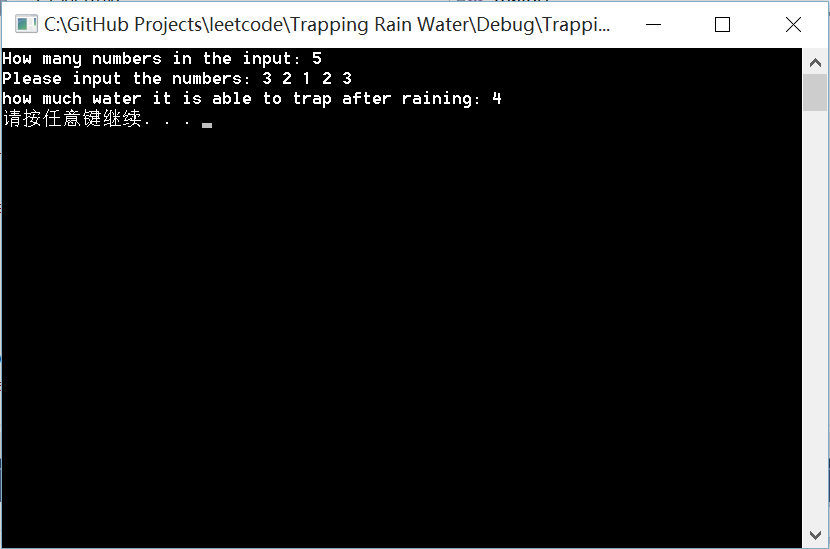leetcode笔记:Trapping Rain Water
一.题目描述
Given n non-negative integers representing an elevation map where the width of each bar is 1, compute how much water it is able to trap after raining.
For example,
Given [0,1,0,2,1,0,1,3,2,1,2,1], return 6.
The above elevation map is represented by array [0,1,0,2,1,0,1,3,2,1,2,1]. In this case, 6 units of rain water (blue section) are being trapped. Thanks Marcos for contributing this image!
二.题目分析
该题目需要找到规律。对某个值height[i]来说,能trapped的最多的water取决于在height[i]之前最高的值:height[left_max]和在height[i] 的右边的最高值height[right_max]。
再简单地说,对于当前值height[i] 来说,找到其左边最大值height[left_max]和其右边最大值height[right_max],如果:
min(height[left_max], height[right_max]) > height[i]
那么在i这个位置上能trapped的water就是:
min(height[left_max], height[right_max]) - height[i]。
总结出这个规律后一切就好办了,你可以选择第一遍从左到右遍历,计算数组的height[left_max];第二遍从右到左遍历,计算height[right_max]。
这里的方法是先遍历一遍,找到最高的值height[max_index],然后以该值的下标为分界,将数组分为两半,左右分开计算,这样,最大值height[max_index] 的左方只需计算各各值左方的最大值;同理 最大值height[max_index] 的右方只需计算各各值右方的最大值。
这些方法的时间复杂度是O(n),空间复杂度O(n)。
三.示例代码
#include 结果:
四.小结
这道题的难点是发现规律,如果做到这一点,实现起来也并不是很难,但以上的方法基本需要遍历两次数组,是否能只用一次遍历就能算出结果而满足空间复杂度限制的方法呢?


